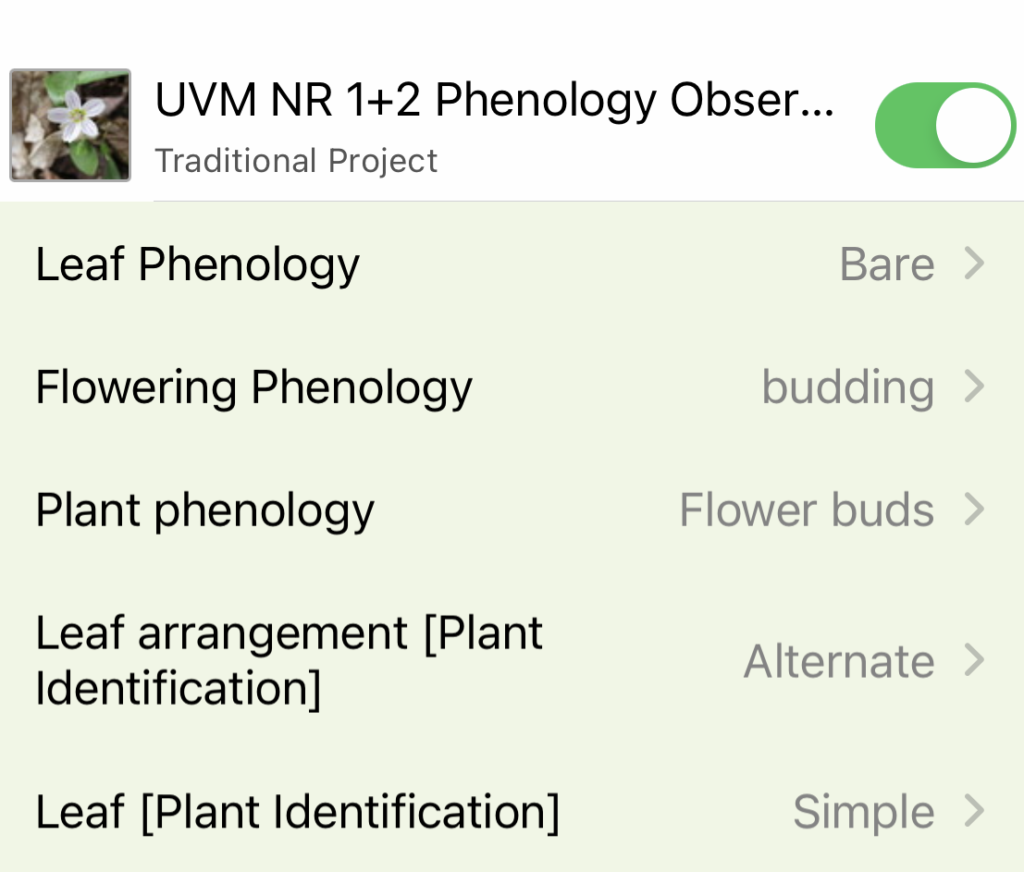For this assignment, I chose a spot in the Old East End woods, just off of Colchester Ave. Initially, I visited Salmon Hole (my actual phenology spot) but found that there are way too many lookalikes for me to be confident in my tree identification.
I chose a young red maple tree to observe for the rest of the semester! My process of identifying the tree began with a faraway look at what the tree’s branching was like. I saw alternate branching and went on to further investigate it.
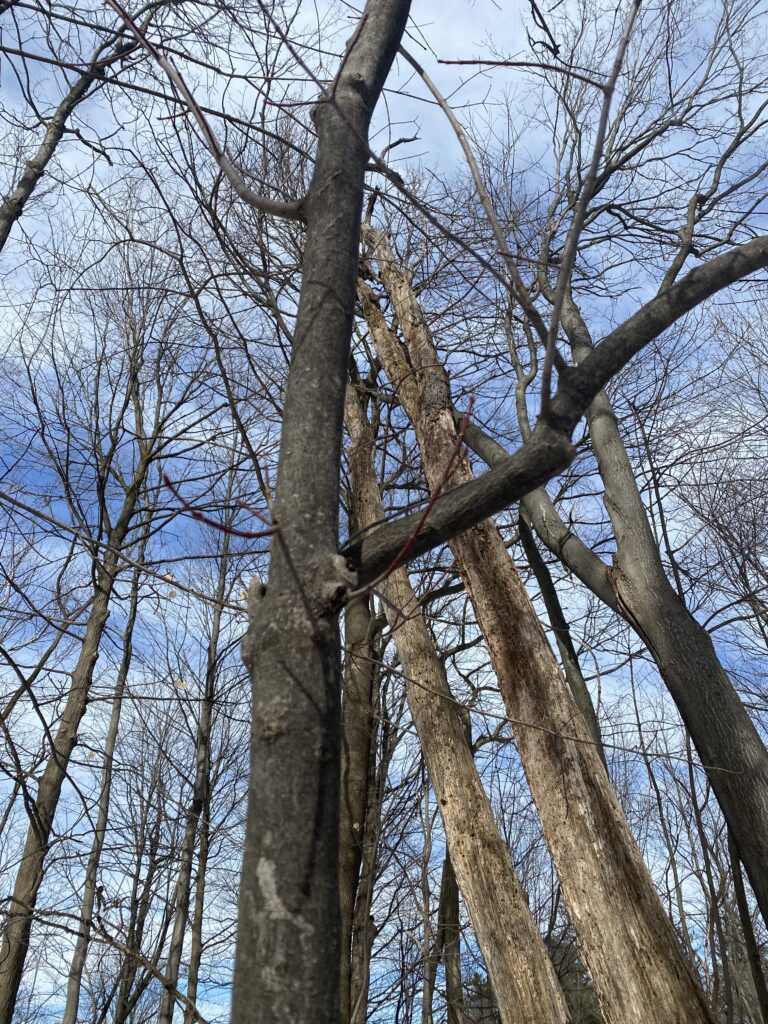
This tree can easily be confused for an American beech due to its smooth bark, but looking at the tree’s twigs show clear signs of red maple’s distinct winter buds. The ends of branches contain long red sections with white spots and buds forming up the red section, with a terminal bud at the end. Buds are red and elliptical. This also distinguishes red maple from other types of maples.
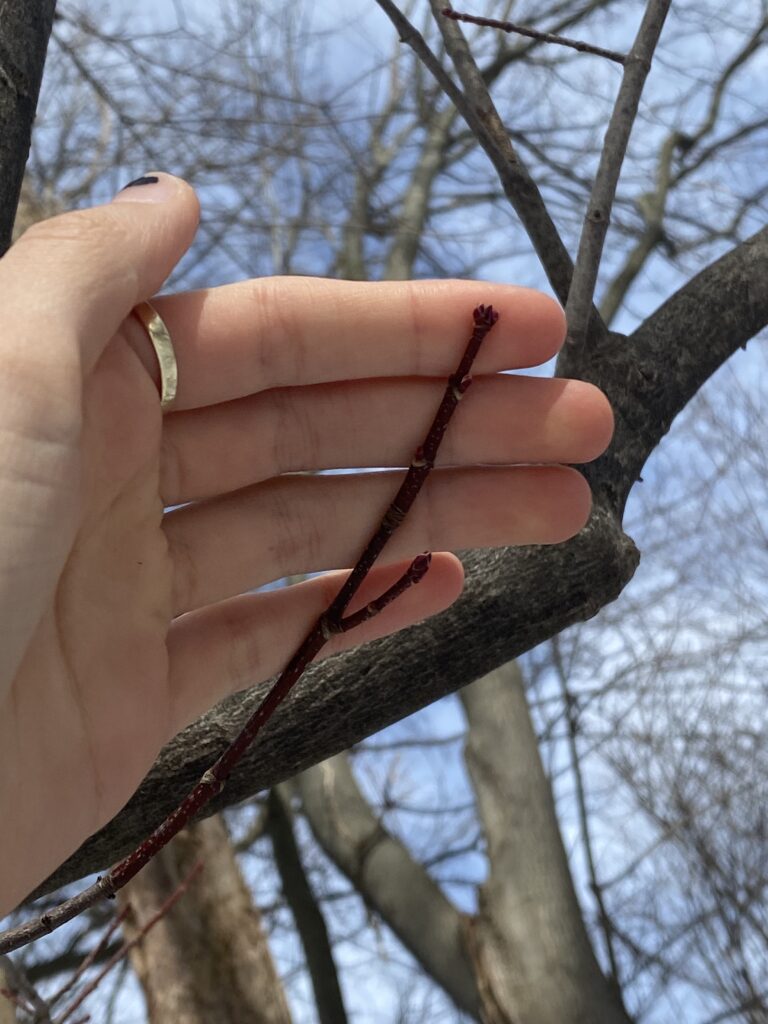
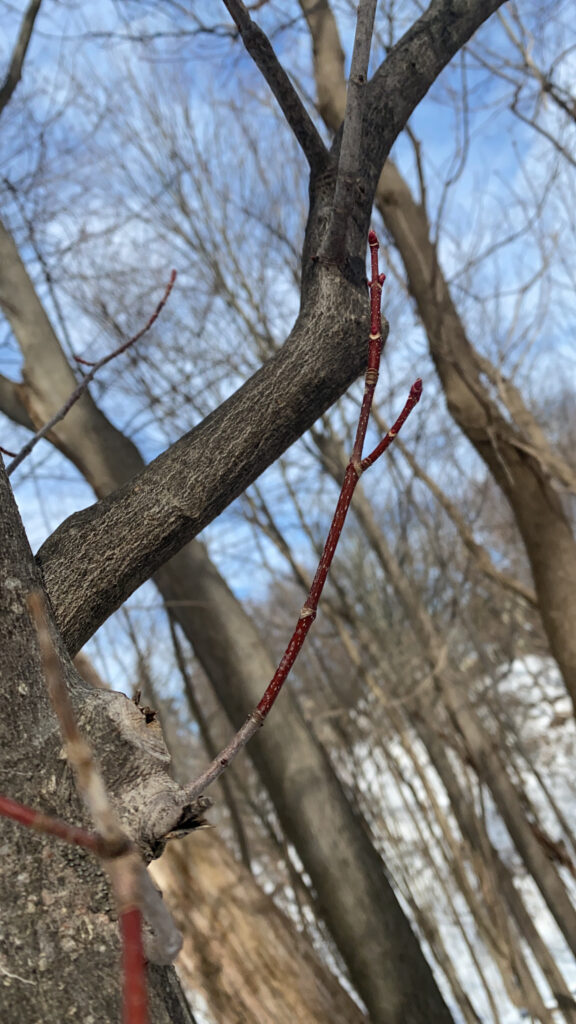
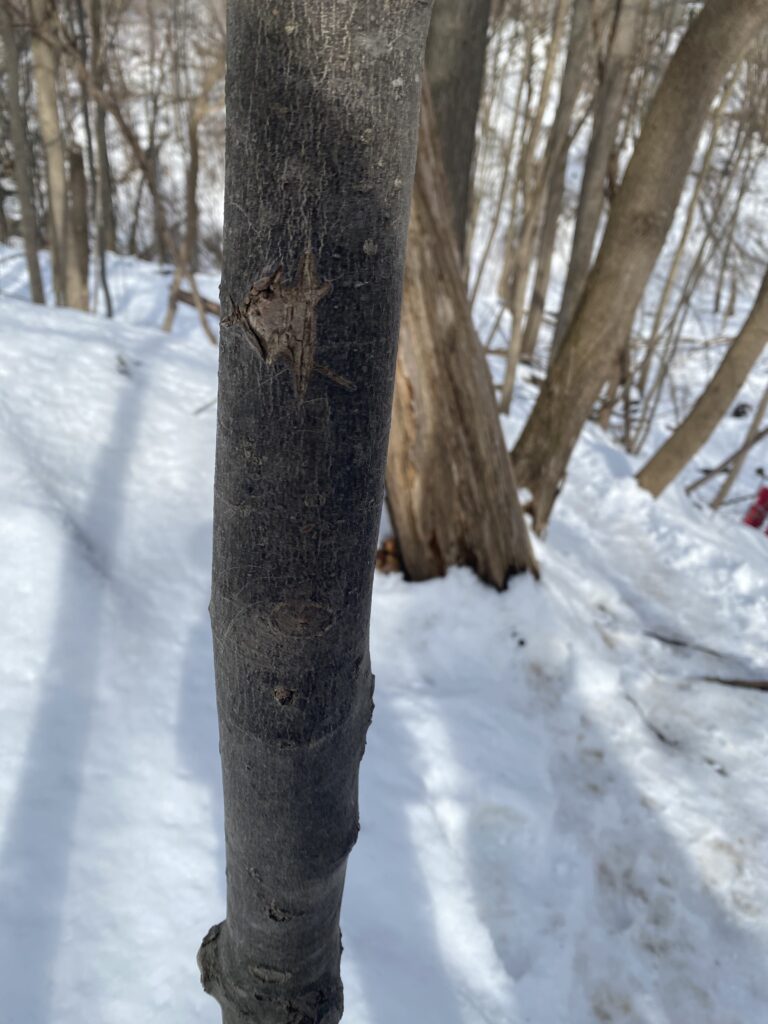
Another way to spot maple trees is by the target shapes on the bark! Target cankers form as a defense against fungus and grow in a circular shape on the bark of maple trees.
This red maple showed no signs of flowering, as buds were just beginning to form. No leaves were present on the tree. The plant had alternate leafing pattern and would have simple leaves, if it wasn’t bare.
